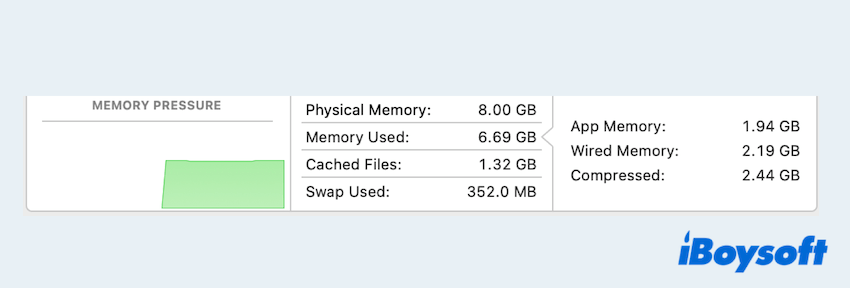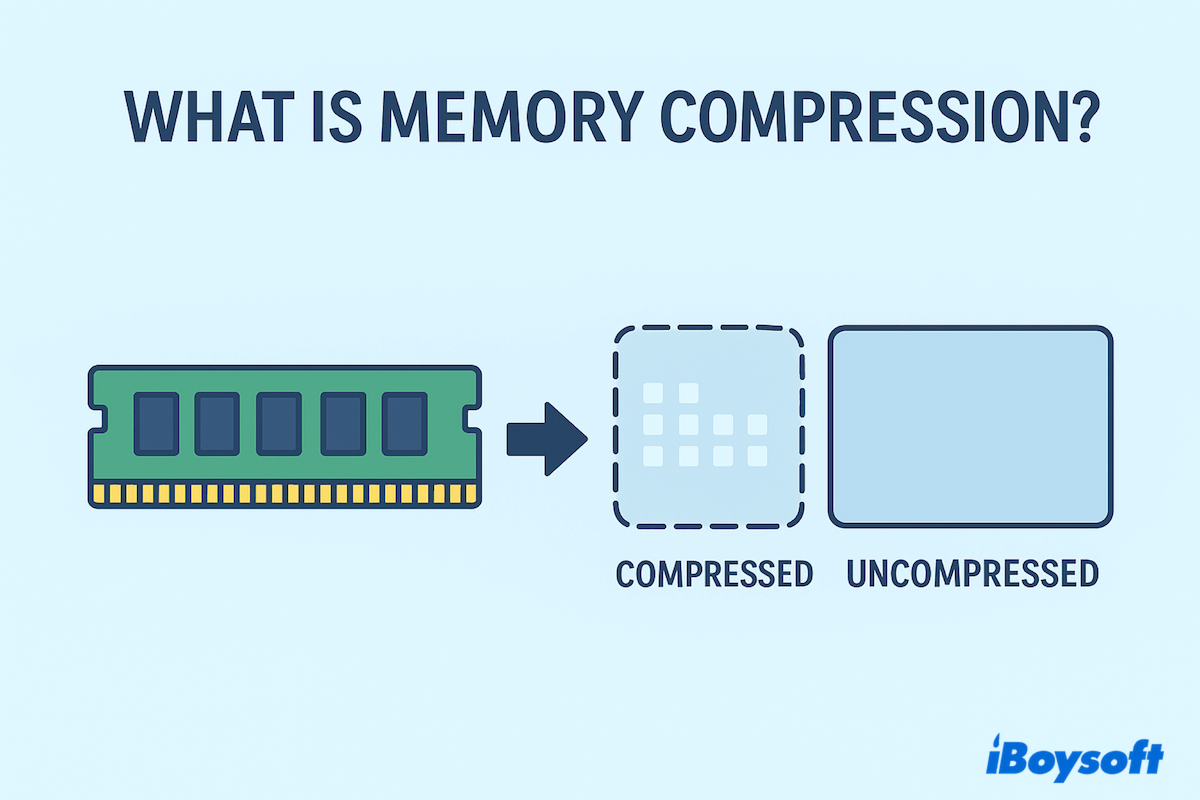When your computer starts running low on RAM, it has to make space for new data. Traditionally, it does this by moving inactive pages to disk (paging/swapping), which is much slower than RAM-especially noticeable when many apps are open.
Memory Compression, also called RAM Compression and Virtual Memory Compression, reduces this slowdown by storing some RAM pages in a compressed form instead of immediately pushing them to disk. Compressed pages take less space, so more data stays in fast memory and your system remains responsive.
How Memory Compression works
Here, just summarize the main functions of Memory Compression:
- Identify candidates: The OS monitors memory and picks inactive or less-frequently used pages.
- Compress pages in RAM: Those pages are compressed with lightweight, fast algorithms and kept in a special in-RAM pool.
- On access, decompress quickly: If a process needs the data, the OS decompresses it on the fly and returns it to normal RAM.
- Fallback to disk if needed: If RAM pressure continues to rise, the OS may still page compressed or uncompressed data to disk—but compression delays or reduces how often that happens.
Compression vs. Swapping (at a glance)
Compression: stays in RAM, costs CPU cycles, saves space, very fast access after decompression.
Swapping/Paging: moves data to disk/SSD, saves RAM without CPU cost, but access is much slower.
Advantages and disadvantages of Memory Compression
See a table below:
| Pros | Cons |
| Better responsiveness under load | CPU overhead |
| Fewer writes to SSD | Diminishing returns with ample RAM |
| Great for VMs and lightweight devices | Potential micro-latency |
Please share this post if you feel it is helpful.
Memory Compression on different systems
What does Memory Compression do on different operating systems?
macOS
- Uses in-RAM compression (introduced in OS X Mavericks).
- You'll see "Compressed Memory" and a Memory Pressure graph in Activity Monitor.
- Managed automatically; there's no typical user-facing on/off switch.
Windows (10/11)
- Memory compression is part of the Memory Manager.
- Task Manager shows "In use (Compressed)" to indicate how much RAM is compressed.
- Enabled by default and self-tuning; little need to tweak.
Linux
- Two common approaches:
zswap: A compressed cache for swap in RAM; pages may later be written to disk if needed.
zram: Creates a compressed block device in RAM (often used as a fast, compressed swap). - Behavior is configurable (algorithms, sizes, priorities) and popular on servers, embedded devices, and desktops.
You can check or manage Memory Compression:
On macOS, Finder > Applications > Utilities > Activity Monitor > Memory, look at Memory Pressure and Compresses Memory value.

On Windows, Task Manager > Performance > Memory, see In use (Compressed).
Memory Compression keeps more data in fast RAM by storing some pages in a compressed form. It improves responsiveness under memory pressure and cuts swap I/O, at the cost of some CPU overhead. Learn more to fix Mac Memory Compression high RAM.
FAQs about Memory Compression
- QWhat is the meaning of Memory Compression?
-
A
Memory compression is a technique where the operating system stores inactive data in RAM in a compressed format to save space and reduce swapping to disk.
- QIs it normal for RAM to be compressed?
-
A
Yes. Modern systems like macOS, Windows 10/11, and Linux use memory compression automatically when RAM is under pressure.
- QShould I disable Memory Compression?
-
A
No. It usually improves performance. Disabling it can lead to more disk swapping and slower response times.
